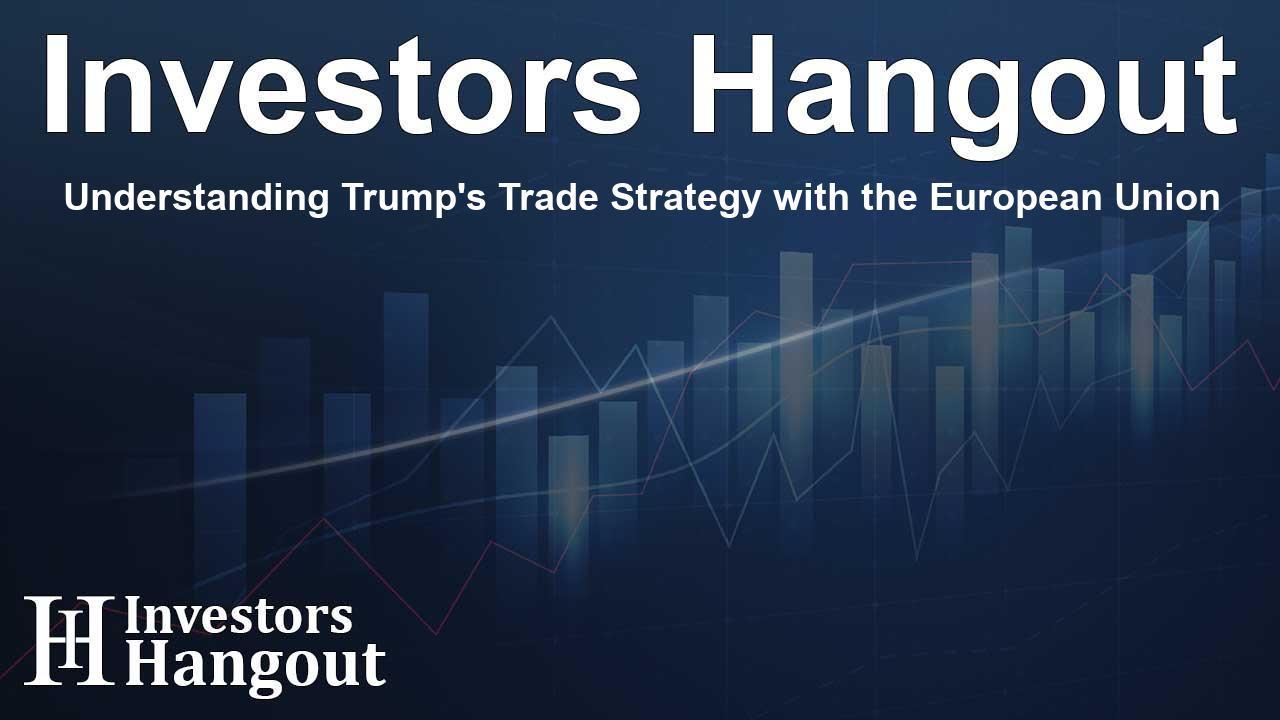Understanding Trump's Trade Strategy with the European Union

Trump's Trade Policy and the European Union
U.S. President Donald Trump has been vocal about addressing the persistent trade deficit with the European Union, pledging to implement measures like tariffs or encouraging the EU to increase its import of American oil and gas.
Examining the Trade Deficit
In a directive issued as part of his 'America First Trade Policy', Trump tasked various governmental departments with investigating the trade imbalance between the U.S. and the EU and to propose solutions in a timely manner.
Trump has historically focused on the trade of goods, often voicing concerns about the EU's significant car exports to the American market while the flow of U.S. vehicles to Europe has been low. This trade dynamic has led to a notable goods trade deficit, recorded at approximately 155.8 billion euros.
The European Perspective
European Commission President Ursula von der Leyen emphasized the EU's desire for constructive dialogue with the U.S., cautioning against a potential 'global race to the bottom' in trade relations spurred by tariffs.
The Role of Services in Trade
Interestingly, while the goods trade shows a deficit, the U.S. holds a surplus in services, with a notable balance of 104 billion euros in its favor. This demonstrates a more nuanced trade relationship that includes strong exports of service-related industries.
Germany's Export Dominance
As the EU's largest exporter, Germany's goods account for a significant portion of the bloc's exports to the United States, and factors like tariffs could have broad implications for these economic connections.
Responses to Tariff Threats
As policymakers consider the threat of tariffs, there's a call for unity among EU member states. The recent rise of nationalist and populist attitudes may pose a challenge to this solidarity.
Navigating Shifting Political Landscapes
Political dynamics in Europe, exemplified by discussions surrounding right-leaning governments, could affect how the EU responds to the Trump administration's trade policies. Key figures like Italy's Prime Minister Georgia Meloni and Hungary's Prime Minister Viktor Orban are pivotal in shaping these responses.
Energy Imports: LNG and Oil
The U.S. has emerged as a leading supplier of liquefied natural gas (LNG) to the EU, fulfilling a significant percentage of imports. Trump has encouraged Europe to further increase its energy imports from the U.S., asserting that this could reshape energy dynamics.
The Challenge of Increased Production
Despite Trump's assertions, there are challenges to ramping up these energy exports. Current U.S. production levels are near maximal, and rising domestic demand complicates potential increases in exportation of natural gas and oil.
Defence Spending and Arms Purchases
Another critical aspect of the trade relationship is the defense sector. Trump strongly advocates for NATO allies to boost their military spending. The EU's response to evolving security threats has led to significant growth in arms imports from the U.S.
Trends in European Defence Imports
Recent data indicates that European imports of arms from the United States have significantly increased, highlighting a shift in military procurement strategies and the importance of U.S. arms in European security postures.
Looking Ahead: Trade and Political Relations
As discussions around trade policies and TARs evolve, the interplay of economic interests and political influences will undoubtedly shape future interactions between the U.S. and the EU. The ability to navigate these complex relationships will be essential for both sides to achieve their strategic goals.
Frequently Asked Questions
What is the current trade deficit between the U.S. and the EU?
The goods trade deficit is reported at approximately 155.8 billion euros.
How does the U.S. perform in trade services with the EU?
The U.S. enjoys a substantial surplus in services, with a balance of 104 billion euros in its favor.
Who are the leading exporters from the EU to the U.S.?
Germany leads as the biggest exporter within the EU, followed by Italy.
What impact do tariffs have on EU unity?
Tariffs create a challenge for maintaining unity among EU members, especially with rising populist sentiments.
How is energy trade between the U.S. and the EU evolving?
Energy imports, primarily LNG and oil, are central to the trade dialogue, influenced by the U.S. push for increased exportation to the EU.
About The Author
Contact Dominic Sanders privately here. Or send an email with ATTN: Dominic Sanders as the subject to contact@investorshangout.com.
About Investors Hangout
Investors Hangout is a leading online stock forum for financial discussion and learning, offering a wide range of free tools and resources. It draws in traders of all levels, who exchange market knowledge, investigate trading tactics, and keep an eye on industry developments in real time. Featuring financial articles, stock message boards, quotes, charts, company profiles, and live news updates. Through cooperative learning and a wealth of informational resources, it helps users from novices creating their first portfolios to experts honing their techniques. Join Investors Hangout today: https://investorshangout.com/
The content of this article is based on factual, publicly available information and does not represent legal, financial, or investment advice. Investors Hangout does not offer financial advice, and the author is not a licensed financial advisor. Consult a qualified advisor before making any financial or investment decisions based on this article. This article should not be considered advice to purchase, sell, or hold any securities or other investments. If any of the material provided here is inaccurate, please contact us for corrections.
